I'm trying to create a scrollable multiplot based on the answer to this question: Creating a scrollable multiplot with python's pylab
Lines created using ax.plot() are updating correctly, however I'm unable to figure out how to update artists created using xvlines() and fill_between().
import numpy as np
import pandas as pd
import matplotlib.pyplot as plt
import matplotlib.gridspec as gridspec
from matplotlib.widgets import Slider
#create dataframes
dfs={}
for x in range(100):
col1=np.random.normal(10,0.5,30)
col2=(np.repeat([5,8,7],np.round(np.random.dirichlet(np.ones(3),size=1)*31)[0].tolist()))[:30]
col3=np.random.randint(4,size=30)
dfs[x]=pd.DataFrame({'col1':col1,'col2':col2,'col3':col3})
#create figure,axis,subplot
fig = plt.figure()
gs = gridspec.GridSpec(1,1,hspace=0,wspace=0,left=0.1,bottom=0.1)
ax = plt.subplot(gs[0])
ax.set_ylim([0,12])
#slider
frame=0
axframe = plt.axes([0.13, 0.02, 0.75, 0.03])
sframe = Slider(axframe, 'frame', 0, 99, valinit=0,valfmt='%d')
#plots
ln1,=ax.plot(dfs[0].index,dfs[0]['col1'])
ln2,=ax.plot(dfs[0].index,dfs[0]['col2'],c='black')
#artists
ax.fill_between(dfs[0].index,y1=dfs[0]['col2']-0.5,y2=dfs[0]['col2']+0.5,where=dfs[0]['col2']==5,facecolor='r',edgecolors='none',alpha=0.5)
ax.fill_between(dfs[0].index,y1=dfs[0]['col2']-0.5,y2=dfs[0]['col2']+0.5,where=dfs[0]['col2']==8,facecolor='b',edgecolors='none',alpha=0.5)
ax.fill_between(dfs[0].index,y1=dfs[0]['col2']-0.5,y2=dfs[0]['col2']+0.5,where=dfs[0]['col2']==7,facecolor='g',edgecolors='none',alpha=0.5)
ax.vlines(x=dfs[0]['col3'].index,ymin=0,ymax=dfs[0]['col3'],color='black')
#update plots
def update(val):
frame = np.floor(sframe.val)
ln1.set_ydata(dfs[frame]['col1'])
ln2.set_ydata(dfs[frame]['col2'])
ax.set_title('Frame ' + str(int(frame)))
plt.draw()
#connect callback to slider
sframe.on_changed(update)
plt.show()
This is what it looks like at the moment

I can't apply the same approach as for plot(), since the following produces an error message:
ln3,=ax.fill_between(dfs[0].index,y1=dfs[0]['col2']-0.5,y2=dfs[0]['col2']+0.5,where=dfs[0]['col2']==5,facecolor='r',edgecolors='none',alpha=0.5)
TypeError: 'PolyCollection' object is not iterable

